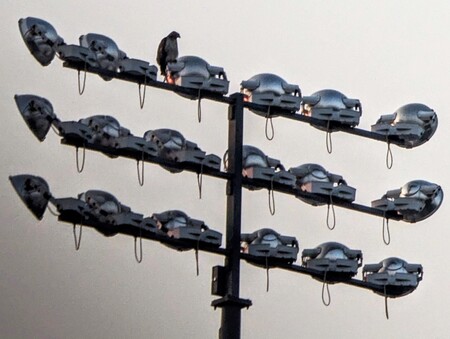
Good Natured: Young Birds Leave the Nest
There's no denying it: Summer is winding down. Those lazy, hazy, crazy days are now mostly in the rearview mirror as families everywhere prepare for the busy fall ahead.
While there's certainly a lot to look forward to, this passage of time also brings with it a certain wistfulness for the carefree times now past, especially among the younger crowd. While some kids eagerly rush forward toward what they see as newfound independence, others are more than a little reluctant to leave the comforts of home.
One in particular caught my attention the other day as he, or she, complained loudly about the new set of circumstances it faced. I was walking the Furry Roommates along the path at Geneva High School's Burgess Field when I heard the first of what would become several grievances: a high-pitched, hoarse kee-eeeee-arr, emitted from somewhere on high.
Believing it at first to be a blue jay mimicking the call of a red-tailed hawk, I looked around to see if I could spot the impersonator. I've seen, and heard, several jays in that area this summer as they've worked tirelessly to harass the redtails that were raising their family there.
I was starting to think that the blue jay needed to tone down it down a bit, as its repetitiveness was starting to sound fake. But then that's when I located the source: a lone, immature redtail, perched on the stadium lights above the football field, was calling—unsuccessfully—for its supper.
Until recently, red-tailed hawk parents have been the consummate providers for their offspring. Both Mom and Dad worked hard to supply their brood with all sorts of fresh-caught delectables, including mice, voles and squirrels. Dad did most of the hunting, especially at first, while Mom was the one who parceled out the bounty. And together they made sure the family's crops always were full.
But now, a few months after it began, that gravy train has ground to a halt. Mom and Pop have moved on and, once it comprehends that it's on its own, Junior will too.
This first step towards independence, however shaky, is how young redtails—and Cooper's hawks, and great-horned owls, and eagles, basically all raptors—start to build the skills they need to survive. Because however difficult things seem now, they're only going to get worse as the seasons progress.
Estimates of mortality rates for first-year birds of prey vary widely and depend on species as well as the methods used for counting. But it's pretty widely accepted that at least half of all birds of prey do not survive their first year. Throw in conditions like bad weather or low prey numbers and that figure can jump significantly higher.
Which is why it's so important that these young birds nail down their skills now.
I'm not sure what happened to the Burgess Field redtail. It took off after about 10 minutes of me peering up at it, an act that, now that I'm thinking about it, could mean the youngster felt uncomfortable with all the attention—and that's a good thing! I haven't seen, or heard, it since.
But I know other young raptors are also going through this same rite of passage, or soon will. For instance I saw a young Cooper's hawk the other day with a sparrow I'm pretty sure it caught on its own.
And I know it won't be too much longer before we start getting calls at Good Natured World Headquarters about the sounds of another species hitting its next phase of development.
Actually, sound is a generous description. Most callers describe what they're hearing as “noise," and often add other colorful adjectives like “whiny," “creepy," “constant," and “annoying," while noting that they hear it only at night.
What makes these vocalizations even more remarkable is that they come from a bird that is instantly recognizable, even by non birders: the great horned owl.
Usually starting in September and continuing into October, the plaintive squeals—or piercing screams, according to a Cornell Lab of Ornithology description—of young GHOs whose parents have stopped helping with meals will emanate from treetops and other lofty perches.
Just like a teenager who'll make himself a sandwich when he gets hungry enough, most young birds will eventually figure out that they're on their own. I do though remember a group of owlets I kept track of a few years back…
Each night when I'd walk the Roommates I'd hear the three GHOs begging from various points in the neighborhood. Over time they went from three to two, and then from two to one. But, my goodness, that last one! It was determined to get its due.
I last recorded its calls on December 3 of that year. What happened after that? I don't know, but I'd like to think that finally it, too, realized it was time to straighten up and fly right.
Interestingly enough, our most recent full moon, often called the Sturgeon Moon, has another name among the Cree of Canada. The Flying Up Moon serves as a reminder that late summer is the time of year when young birds fly up, and away, leaving their nests and their parents to seek their fate. And start making their own sandwiches.
Pam Otto is the outreach ambassador for the St. Charles Park District. She can be reached at potto@stcparks.org.

